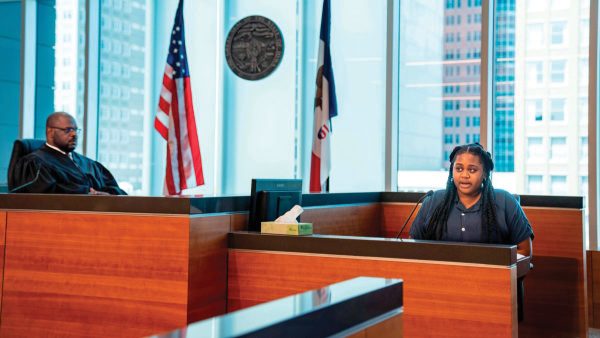The Iowa Caucuses: one year later
Feb 4, 2021
One year ago yesterday, the 2020 Iowa Caucuses launched. All eyes were on Democrats with a wide-open field. Elizabeth Warren had peaked early, some candidates had already dropped out and Pete Buttigieg and Bernie Sanders were slugging it out for the momentum a win in Iowa would give them. Then, the whole thing came off the rails. I would know, I was in the room.
I started working at the Iowa Democratic Party in May of 2019 and began working closely with the caucus team in November of 2019. I, like every other staff member at the Iowa Democratic Party, worked diligently to fulfill the promise we had made to Iowans: the 2020 caucuses would be the most accessible, successful caucuses ever held.
I do want to include a disclaimer here, that I was not privy to every conversation and I was not a high-level decision-maker. The post-mortem report commissioned by the IDP only spoke to senior staff and I did not speak with anyone internally, which is in part why I am writing this, but I can’t speak for all of the junior staff who were there at the time. I was, however, involved in many of the processes that built the caucuses.
The big problem, as I observed, which was backed up by the post-mortem report, was the intercession of the DNC into the caucus process. Specifically, the DNC placed a tremendously high bar on the IDP for changes it needed to make to the caucuses. Development of the reporting app did not begin until October of 2019, due in large part to drawn out negotiations with the DNC and the failure of the reporting portion of the app was precipitated by a DNC requirement for raw data sharing, which was not proposed until days before the caucuses.
Even beyond the app, during the night I had to call a friend to bring reams of paper to the boiler room at midnight because we had to manually receive caucus results, I chaired three different precinct caucuses at assisted living facilities around the state over the phone because satellite caucus chairs — which were recruited by a campaign — failed to appear, and we had a box in the boiler room with tickets so beyond fixing we could not address them immediately. Those are just a few choice examples among many.
Certainly the DNC was right to impose goals and changes on the caucuses to improve them in any number of ways — and I’m glad they did — but their approach to meeting those goals meant that the small team at the IDP was hung out to dry while the DNC sought political cover and the national press piled on.
It might seem like I’m writing this just to put down the IDP, or the DNC, or the press, or to defend the caucuses, but in reality I’m writing this because I want things to change. There were massive improvements made in 2020. Assisted living facilities held caucuses, we had our first deaf and hard of hearing caucus, virtually every caucus-goer will tell you that the rules changes made the caucuses efficient in the room and they were far more enjoyable than the 2016 caucuses.
But the problems that exist are going to remain systemic unless big changes are made to the caucus process. The satellite caucuses were a great start, but they were not as accessible as a virtual caucus would have been, we could have hired more accessibility staff earlier, and more. There are lots of things that would be positive changes to the Iowa Caucuses, but I don’t think they can ever be “fixed.”
I do hope that the ideals of the caucuses, however, will remain a part of our nomination process on both sides of the aisle: incentivizing rural representation, encouraging community organizing, party building and allowing small states to have a voice in the nomination process. Ultimately, I want South Carolina to move to the front of the nominating calendar in 2024, and with Jaime Harrison at the head of the DNC it seems likely to happen. For representation alone, it would be a step in the right direction. Besides, I’d like to see someone else take a stab at being the center of the political universe, because — having been there — it’s a lot harder than it looks.


















